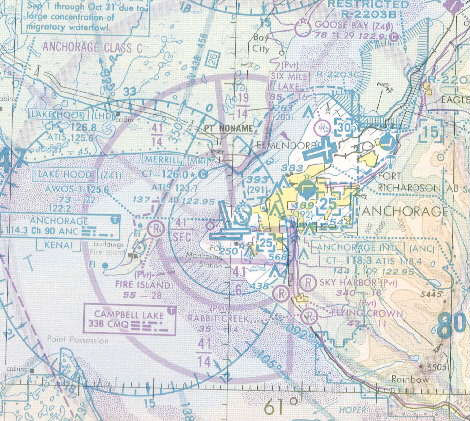By BRAD HAYDEN for General Aviation News
When strange newcomers appear on the threshold of any environment, the friction between them and the established residents stems from incomplete understanding of the prerequisites for safety and survival of both.
By any name — unmanned aerial vehicle (UAV), unmanned aircraft system (UAS), remotely piloted vehicle (RPV) — this is the situation facing drones that aspire to commercial operations in the U.S. National Airspace System (NAS).
The aviators and their passengers who now populate the NAS are naturally concerned with this potential influx and what it means for their safety. Everyone should take a deep breath and relax.
At the recent Association of Unmanned Vehicle Systems International (AUVSI) gathering in Florida, Jim Williams, manager of the FAA’s UAS Integration Office, made it clear that drones can fly for compensation and hire only after their manufacturers demonstrate the airworthiness of their designs to the FAA.
To newcomers, the FAA airworthiness certification process can be a confusing maze. This seems especially true for manufacturers of drones that weigh 55 pounds of less, who primarily reside in the world of technology.
The maintenance, inspections, and record keeping that are the foundation of continuing airworthiness are foreign concepts to them. To FAA repair stations, however, these requirements define daily life. We founded Robotic Skies to facilitate the mutually beneficial partnership between the two.
Reaching across North America, Robotic Skies is building a network of Service Centers that are Part 145 FAA repair stations that possess the necessary mechanical, structural, and electronic knowledge and skills that will employ aviation standards and practices to maintain aircraft of any size. The network’s services include airworthiness certifications assistance, routine and field maintenance, inspections, component part distribution, and installations and upgrades.
As it has with light-sport aircraft (LSA), and as it is with the Part 23 rewrite, ASTM International plays a central role in creating the standards for drones. Along with aviation industry experts, Robotic Skies is a member of Committee F38 on Unmanned Aircraft Systems that recently published seven standards that cover the major facets of certification, including design, construction, operation, and inspection and maintenance requirements. The requirements for everything from flight manuals to acceptance flight testing to maintenance and inspections are like those for all aircraft regardless of where the pilot sits.
Record keeping is what makes the FAA’s airworthiness system work, and Robotic Skies has turned to the tech industry for its service software. The cloud-based application has the ability to track individual airframes, powerplants, and avionics, life- and time-limited components, and command and control systems. And manufacturers can upload the maintenance and/or flight manuals (and their updates) for each make and model, as well as verify compliance with service bulletins, warranty status, and monitor reliability data for product improvement.
The Robotic Skies service software will enable the operator, insurance companies, and the FAA to assure that the craft has been properly inspected and maintained. As with almost every integration of new technology into the national airspace, the FAA is moving with deliberate, small steps, so it does not compromise its primary reason for existence — aviation safety.
As required by its 2012 reauthorization act, the FAA created six UAS test sites to gather safety data to be used as a basis for integration. The sites in Alaska, North Dakota, Texas and Nevada are already in operation, with New York and Virginia close behind them.
Working under Section 333 of the 2012 reauthorization act, which allows it to issue exemptions, the FAA is also focusing on low-risk commercial drone operations that would commence before all of the certification and integration requirements are in place.
Several companies have applied for waivers, said Williams, to employ drones for motion picture work on closed sets, the inspection of power lines and flare stacks, and “precision” agriculture. What these operations all have in common is a limited flight area that will not endanger those on the ground or in the air.
Like other exemption requests, the FAA will publish them for public comment before approval. While Section 333 enables the FAA to approve exemptions from aircraft certification requirements, Williams told Aviation Week that “there will still have to be a certificated pilot with specific training for that type of aircraft.”
The details are found in FAA Order 8130.34B, which guides FAA inspectors in their regulatory endeavors. The “Sample Operating Limitations for Unmanned Aircraft Systems” is the template the FAA will use for those seeking exemptions and experimental airworthiness certificates. Customized for each issuance, the operating limitations specify where and how the UAS may operate.
Common to all is the requirement that the pilot in command must possess FAA pilot certification. By possessing this pilot certificate, the drone PIC will have demonstrated his or her knowledge of U.S. airspace rules, regulations, and operational requirements. And depending on the operations, the PIC must be in reliable radio contact with visual spotters that are the see-and-avoid system with traffic that might enter the drone’s defined operating area. When it comes to PIC requirements, said Williams, “We can’t waive that.”
The bottom line is that the FAA is not going to simply allow commercial drones to fly through the NAS without prerequisite training, inspections, and restrictions.
Robotic Skies does not view the emerging drone fleet as an entirely new industry; rather we view it as a new market segment within the already existing aviation community. As such, drones will have to follow the same “rules of the road” as manned aircraft to fly within our airspace.

